Why can’t I access this file?
Possible reasons you cannot access this file:
- Your membership has expired.
- The file is restricted to certain users.
If you are seeing this message in error, please contact us.
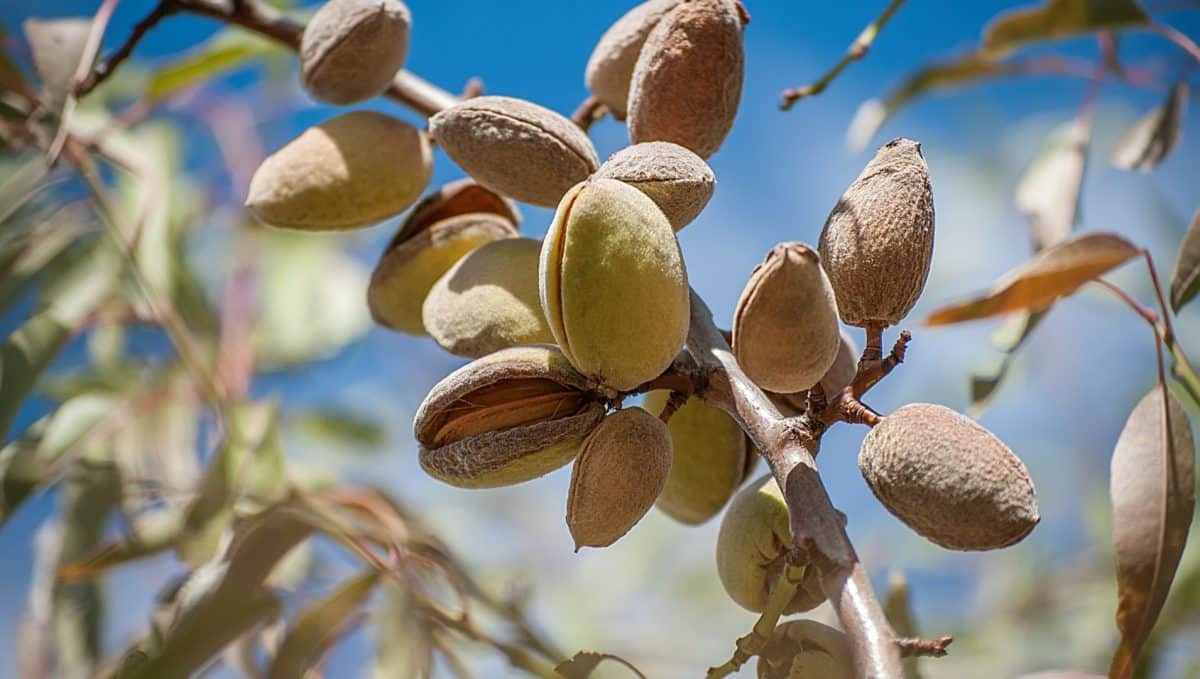
Crops: Almonds
4R Practices: Time Place
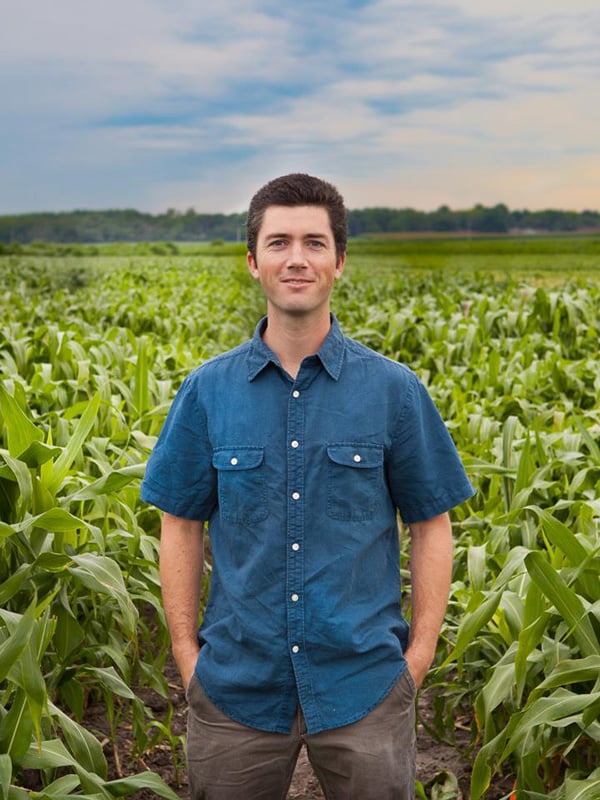
Lead Researcher:
Dr. Patrick Brown
Professor
University of California-Davis
Start Date: 2019
End Date: 2024
This study addresses a specific technical problem that the California almond industry is currently facing: How do you prevent nitrate leaching in micro-irrigated almonds orchards while simultaneously preventing salt accumulation in the root zone? Salinity imposes a significant impact in many areas of the central Valley of California and is greatly exacerbated in drought years when groundwater replaces surface water supplies. Californian agriculture is also now legislatively mandated to reduce nitrate leaching. Salinity has historically been managed by the application of water in excess of plant demand to leach salts (particularly Cl) below the active root-zone, NO3 however, leaches at essentially the same rate as Cl and hence will also move to the saline periphery of the root zone, where it is subject to loss. The control of salinity buildup by leaching, has not been optimized for the microirrigated context, and requires access to adequate water supplies and thus has a high potential risk of nitrate leaching and groundwater contamination. To develop irrigation and fertigation practices that achieve nitrate-sensitive salinity management, will require a deep understanding of root responses to micro-irrigation and the dynamics of nitrate and salinity uptake and movement in saline affected microirrigated orchards. To address this challenge, we propose an integrated study of root architecture and distribution, root physiology and plasticity, under micro-irrigation in almond. This study places a special focus on determining the ‘right place’ and ‘right time’ so that irrigation and fertigation strategies can be optimized to achieve nitrate-sensitive salinity management.


Crops: Cotton
4R Practices: Source Rate Time Place
Lead Researcher:
Dr. William Frame
Associate Professor
Virginia Tech
Start Date: 2019
End Date: 2023
Nitrogen (N) is second only to water as a yield-limiting factor in non-legume cropping systems such as corn (Zea mays L.) and cotton (Gossypium hirsutum). Countless research endeavors have sought to unravel the dominant loss mechanisms/pathways in these two crops; however, the end result is that N use efficiency (NUE) remains ~33% worldwide and 40-60% in the U.S. As a result, roughly half to two-thirds of the applied N in non-legume cropping systems can move off-target and into the surrounding environment. To reduce these gaps in NUE, integrated research is needed to understand how N moves, transforms, and is utilized in non-legume cropping systems. This need is particularly urgent in cotton production systems, which represent 5.67 million hectares in the U.S. and required 373,409 metric tons of applied N in 2017.
Previous studies in cotton have focused on N application rates, timing, source, and placement (the 4R’s of nutrient management) in the Mid-South, Southeast, and Texas (High plains/Coastal Bend) regions of the U.S. In contrast, few studies have evaluated 4R’s of N management across the humid portions of the cotton belt, even though these areas represent 89.5% of production. At the same time, new/improved technologies and management strategies such as improved cotton varieties, enhanced efficiency fertilizers (EEF’s), and integrated cover crop solutions offer the potential to regulate N transformations in the soil and reduce N losses to surrounding ecosystems. Still, the ability of these techniques to improve NUE in contemporary cotton systems has not been rigorously examined. This project seeks to fill this important knowledge gap by integrating the 4R’s within a comprehensive agroecosystem perspective to improve NUE in cotton cropping systems, while also enhancing soil chemical and physical properties and decreasing off-target N movement via leaching and volatilization.

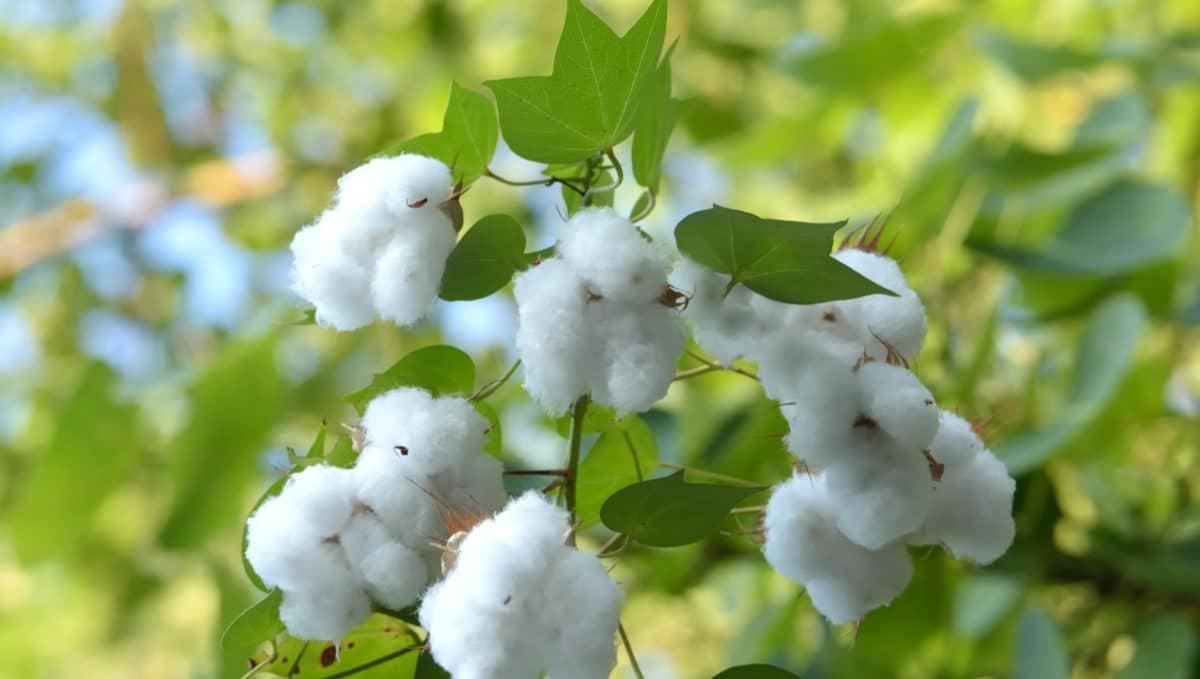
Crops: Cotton Rice
4R Practices: Source Rate Time Place

Lead Researcher:
Dr. Andrew Sharpley
Distinguished Professor of Soils and Water Quality
University of Arkansas
Start Date: 2019
End Date: 2023
Agriculture is the single largest economic sector in Arkansas, accounting for $21.4 billion of value added to the State’s economy in 2016 (University of Arkansas Division of Agriculture, 2019). Arkansas is the nation’s leading rice producer, second in poultry production and in the top 15 among states for cotton, soybean, and corn. Agricultural enterprise account for about 98% of the 1.1 million tons of fertilizer sold annually in Arkansas.
Nutrient enrichment remains a major impairment to the designated uses of fresh and coastal waters of the United States. While there are many sources of nutrients, the contribution of agriculture has received increased attention to reduce nutrient losses, fueled by recent modeling efforts and surveys, which suggest agriculture contributes up to 85% of the nutrients entering the Gulf of Mexico. However, there have been few farm-scale studies of the effects of nutrient management and conservation practice (CP) adoption on water use-efficiency, quality, and system sustainability under cotton and rice production in the Basin, particularly the Lower Mississippi River Basin. These concerns are manifested from regional issues such as hypoxia in the Gulf of Mexico and critical groundwater decline in lower Mississippi Alluvial Aquifer. Also, the cotton supply chain from field to gin, to mill, to retailer, wants assurances that cotton production is sustainable for future business interests. This has prompted supply chain groups such as Field to Market and the Cotton Leeds program, to measure and document indicators of sustainability. Several AR cotton producers are working with the University of Arkansas Division of Agriculture to use the Field Print Calculator for individual fields in AR. The Field to Market Field Print Calculator now includes metrics for rice and is being used by groups, such as the USA Rice Federation, to encourage producers to move towards more sustainable practices.

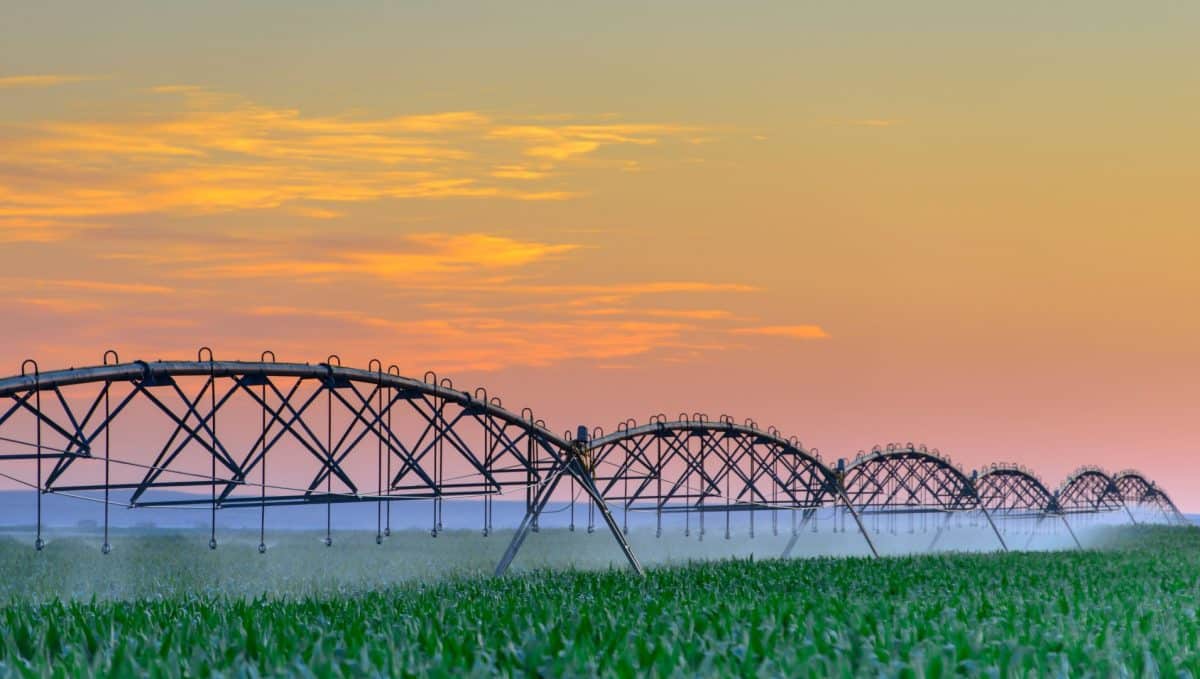
Crops: Alfalfa Apples Barley Beans (dry) Canola Hops Potato Tart cherry Winter wheat Wheat
4R Practices: Source Rate Time Place

Lead Researcher:
Dr. Matt Yost
Assistant Professor
Utah State University
Start Date: 2019
End Date: 2024
This project will explore how individual and stacked nutrient and irrigation 4R’s intersect to improve the sustainability of major forage, fruit, grain, and vegetable crops in the West. It will address both priority cropping systems and priority issues outlined in the request for proposals. Four major efforts will include producer surveys to quantify 4R adoption and barriers, five coordinated field experiments that will utilize a new innovative way to evaluate stacking nutrient 4R’s across crops, utilization of three existing stacked irrigation 4R experiments to quantify how 90 water conservation treatments influence nutrient uptake and efficiencies, and a dynamic multi-state coordinated outreach program to improve adoption of nutrient and irrigation 4R’s. Intersecting nutrient and irrigation 4R’s will guide investments by growers and industry towards combinations that result in the most profitable and sustainable outcomes


Crops: Corn for grain Corn for silage
4R Practices: Source Rate Time Place
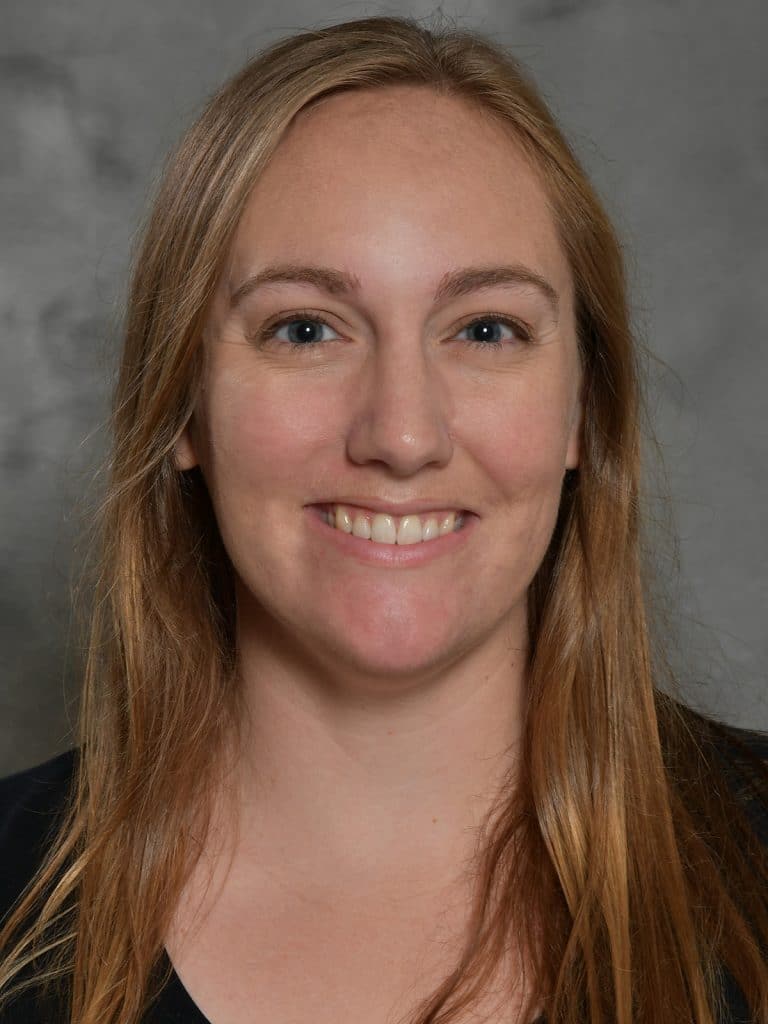
Lead Researcher:
Dr. Lindsay Pease
Assistant Professor and Extension Specialist in Nutrient and Water Management
University of Minnesota
Start Date: 2020
End Date: 2024
Increased grain production in the Northern Great Plains is shifting the traditional range of the North American Corn Belt. At the same time, eutrophication of freshwater lakes is emerging as a critical threat to aquatic ecosystems worldwide. The Red River Basin of the North is currently adapting to new demands in response to both of these changes. Defining and adopting 4R Nutrient Stewardship and edge-of-field (EOF) practices for this cold weather climate across the Red River Basin is critical to reducing the extent and severity of nutrient runoff losses from agricultural land to Lake Winnipeg. Motivating producers to change crop production and nutrient management practices based on environmental impact is difficult in this region since an international border divides source from impact. Increased pressure on Red River Basin farmers has resulted in an urgent need for effective strategies to reduce nutrient runoff. Previous research has shown that the 4R framework can help to meet load reduction goals in Ohio’s similarly flat Western Lake Erie Basin watershed. We propose to evaluate and amend the 4R Nutrient Stewardship Concept for the shifting cropping systems and cold climate of the Red River Basin. A public-private partnership approach involving partners from the US and Canada is proposed to support the long-term success of 4R Nutrient Stewardship and Certification in the Red River Basin.

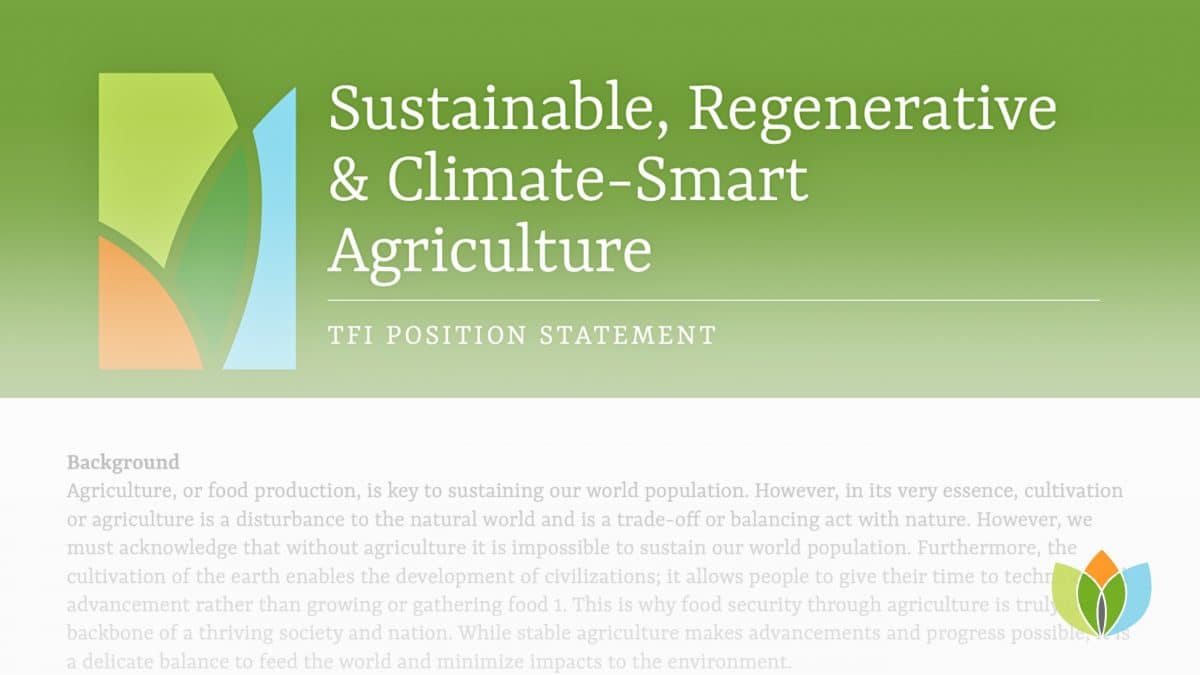
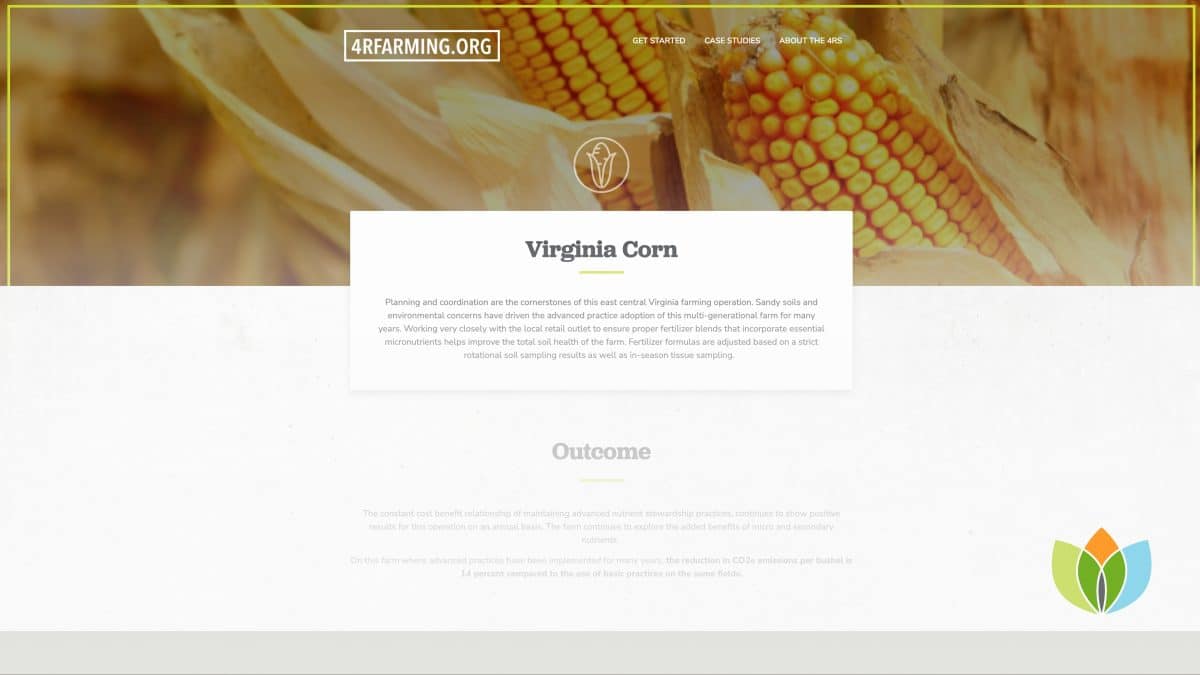
Possible reasons you cannot access this file:
If you are seeing this message in error, please contact us.
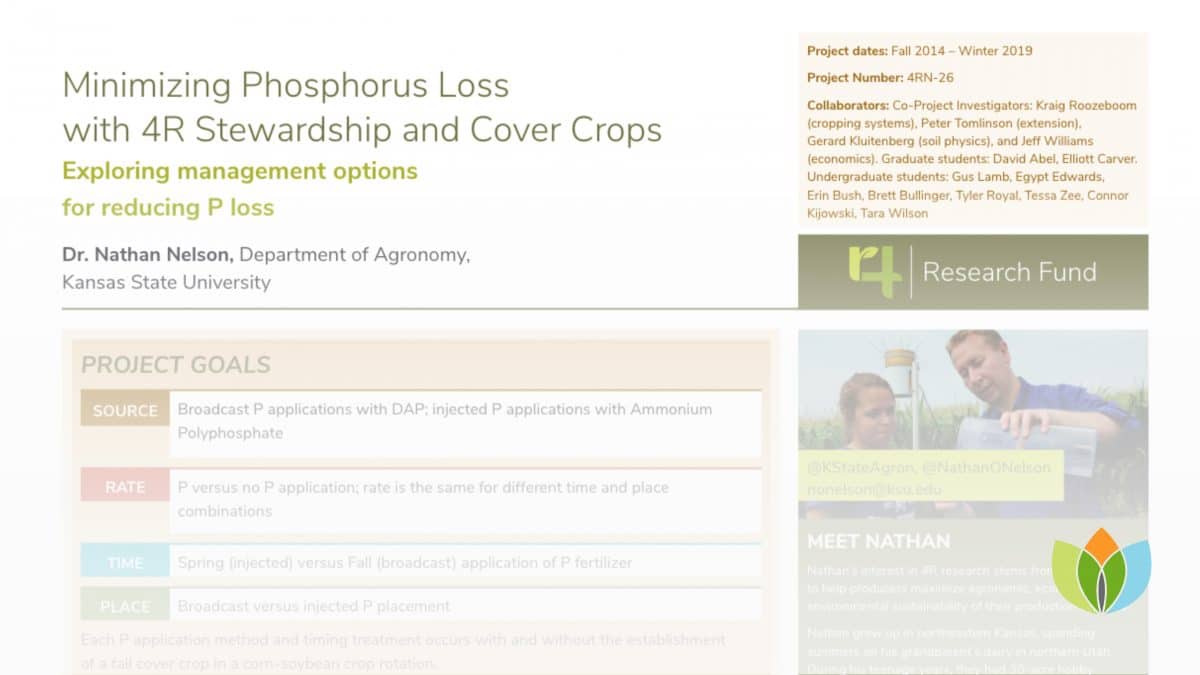
Crops: Corn for grain Corn for silage Soybeans
4R Practices: Time Place
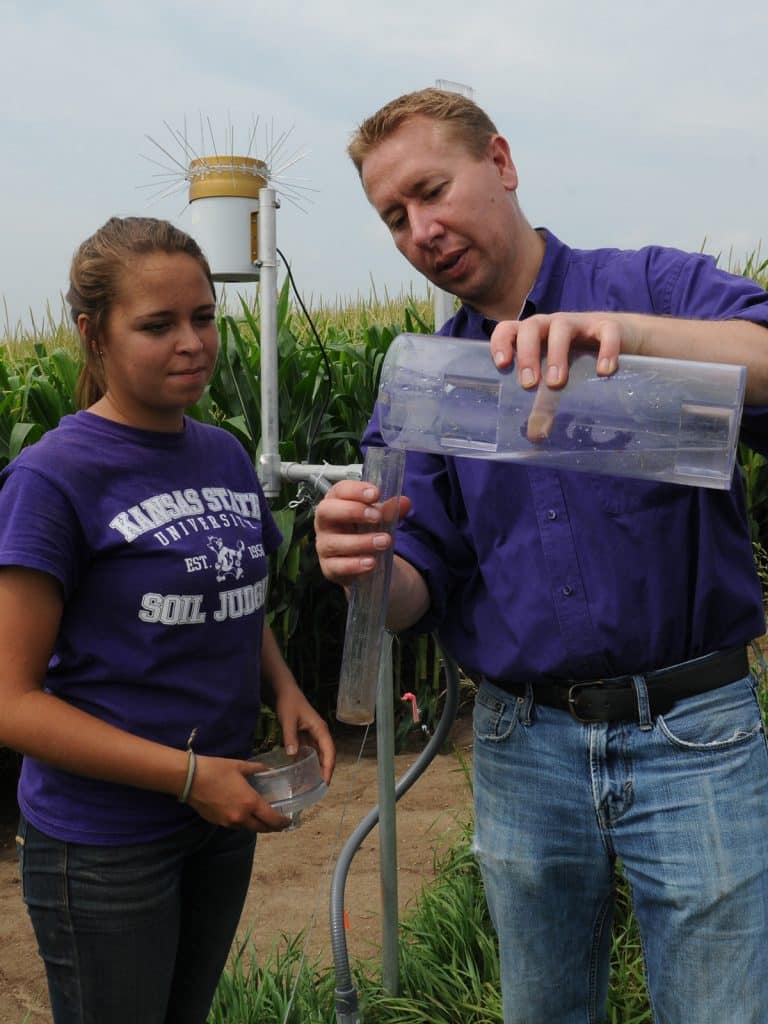
Lead Researcher:
Dr. Nathan Nelson
Professor
Kansas State University
Start Date: 2014
End Date: 2019
Fertilizer timing and placement can have large impacts on P loss. Currently recommended BMPs have focused on sub‐surface fertilizer placement as the recommended method for reducing P loss. In contrast, economic and farm management factors may encourage producers to use surface‐broadcast P applications in the fall. Weather patterns typical of the Great Plains indicate that a shift to fall applications may also reduce P loss from surface applied P fertilizer compared to spring surface applications. We need field-scale data comparing P loss from fall surface applied P fertilizer to sub‐surface spring‐applied P fertilizer so we can make accurate recommendations for the right timing and placement combinations to minimize P loss.
Furthermore, cover crop use may protect against potential increased P loss associated with fall surface‐applied fertilizers, thereby allowing producers wider flexibility in fertilizer management while maintaining minimal P loss. However, we need more information about the effects of cover crops on P loss and the interaction between cover crops and P fertilizer management. Because cover crops can also impact crop yields, we need comprehensive analysis that includes cover crop and fertilizer management impact on multiple agronomic, environmental, and economic factors, including grain yield, N uptake and use, and P uptake and use, input costs, gross return, net return, N and P loss, sediment loss, and runoff volume. Producers and fertilizer dealers recognize the value in this information.





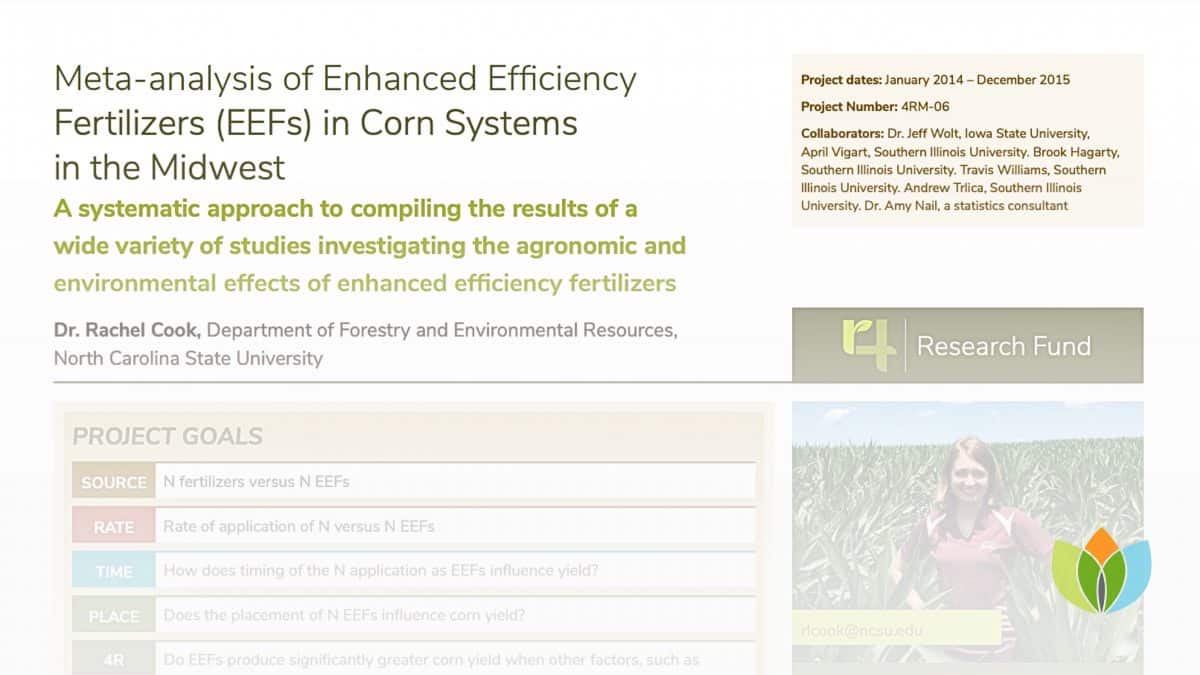
Crops: Corn for grain Corn for silage
4R Practices: Metadata Project
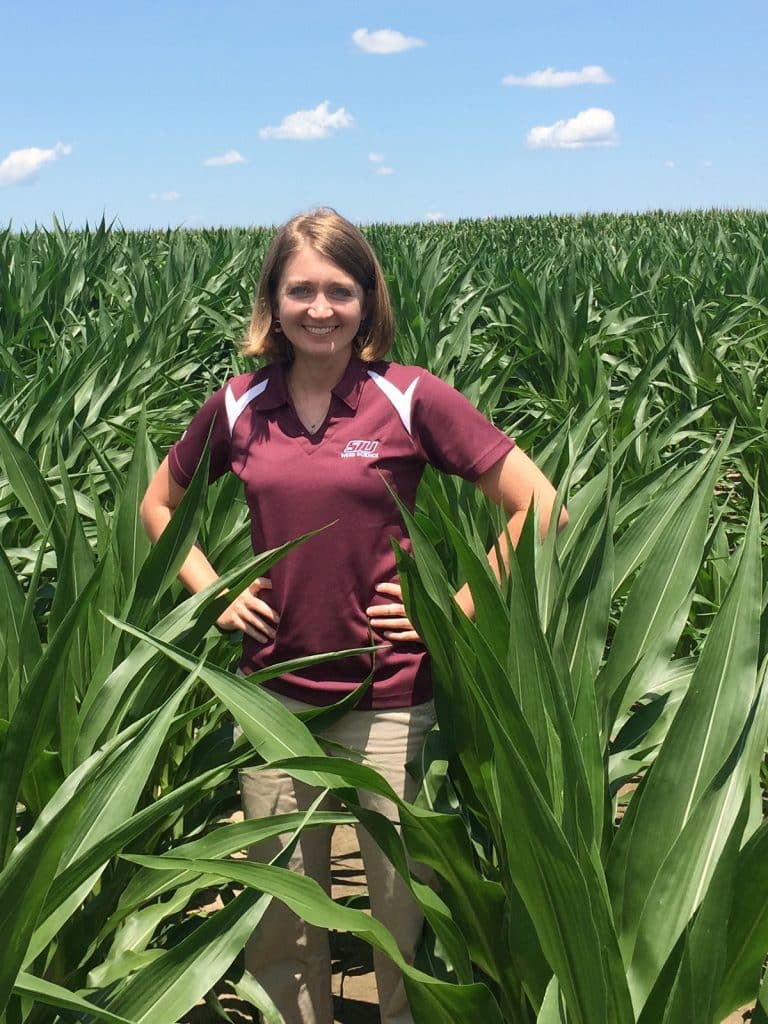
Lead Researcher:
Dr. Rachel Cook
Assistant Professor
North Carolina State University
Start Date: 2014
End Date: 2015
The 4R approach to nutrient stewardship has helped develop a better context for driving best management practices in production agriculture. As the agricultural community becomes more involved in exploring the three aspects of sustainability, including the economic, social, and environmental triple bottom line, the 4Rs (right source, right rate, right time, and right place) provide a framework for better management of fertilizer applications.
The exceedingly large number of possible combinations of source, rate, time, and place, even within one cropping system, can make it difficult to compare results from studies located in different regions, with different climate, soils, and accepted management practices. To prevent needless duplication of study parameters and suggest future study directions, the soil fertility and fertilizer community needs to systematically compile what we know in order to move forward in the most efficient manner possible.


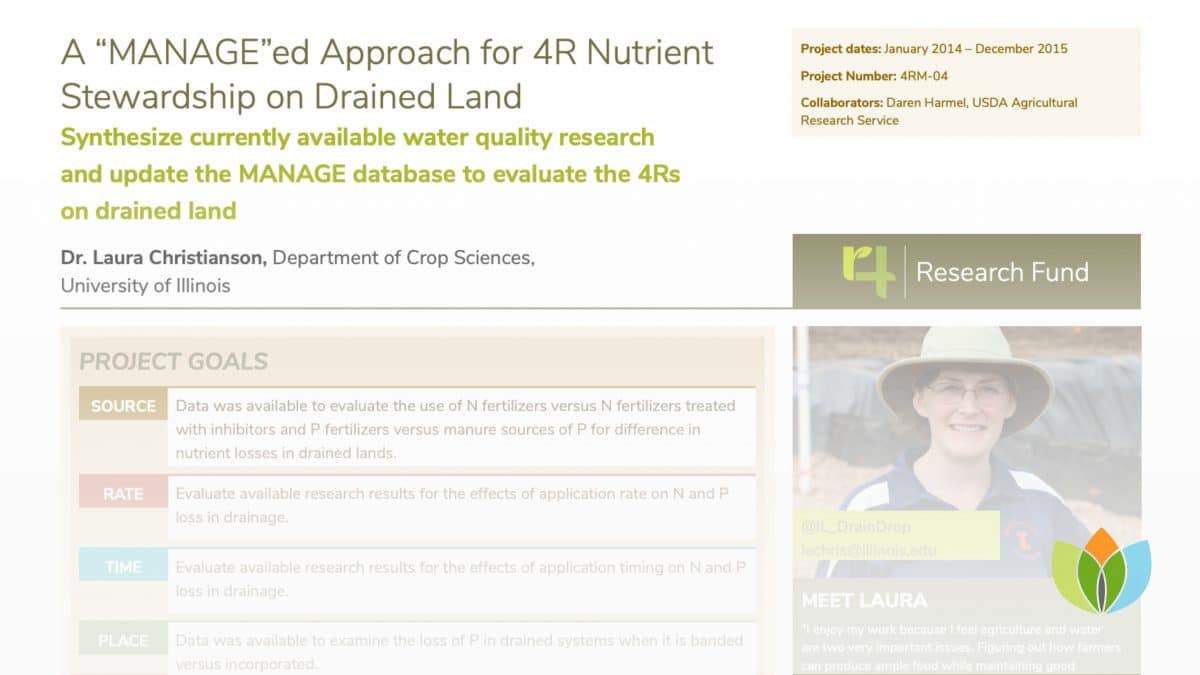
Crops: Canola Corn for grain Corn for silage Cotton Hay Potato Rice Ryegrass Sorghum Soybeans Sugar beets Sugarcane Winter wheat Wheat
4R Practices: Metadata Project
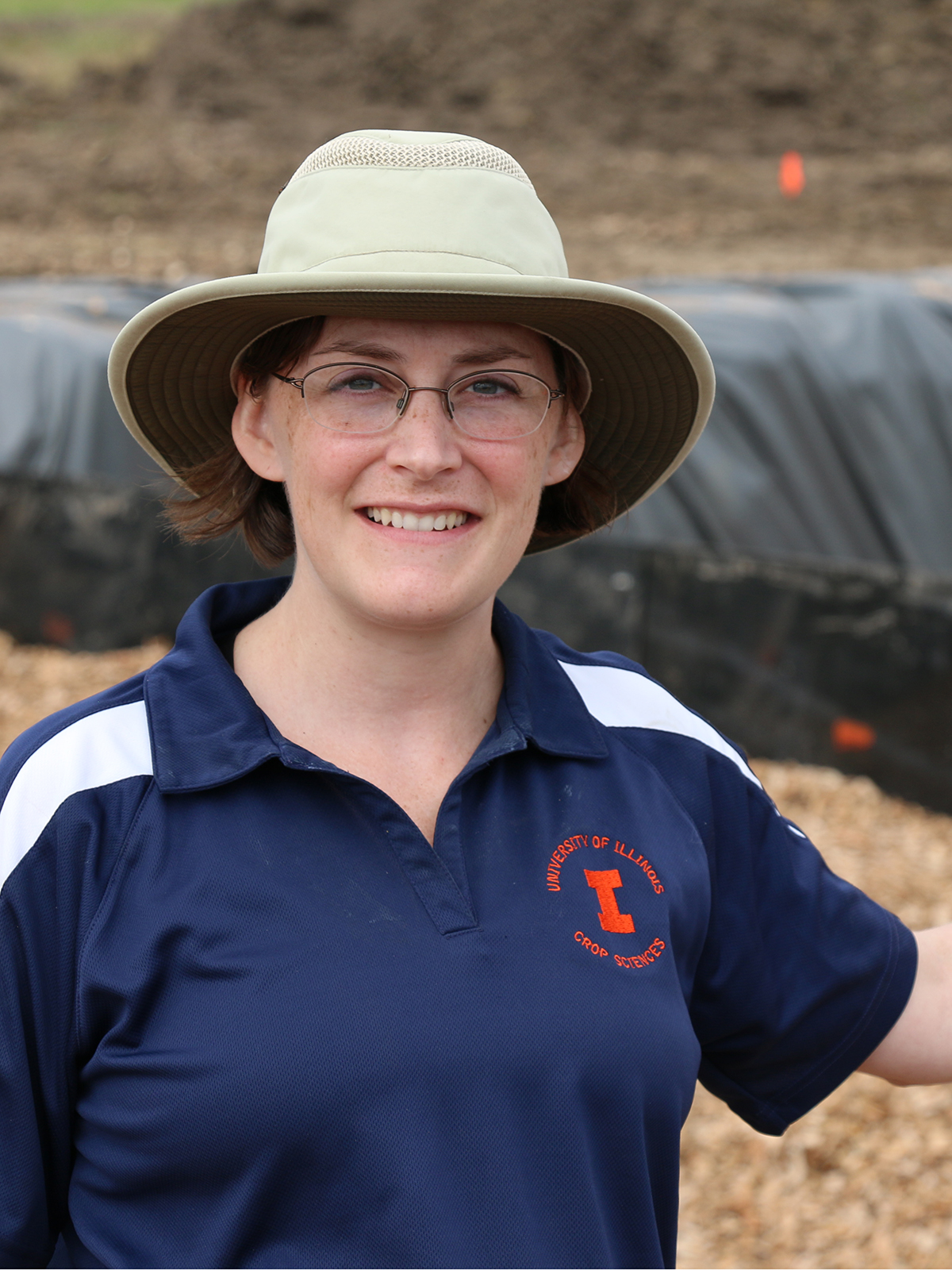
Lead Researcher:
Dr. Laura Christianson
Assistant Professor
University of Illinois
Start Date: 2014
End Date: 2015
As agriculture in the 21st century is faced with increasing pressure to reduce negative environmental impacts while continuing to efficiently produce food, fiber, and fuel, it becomes ever more important to reflect upon more than half a century of drainage water quality research to identify future paths towards increased sustainability. This work provided a quantitative review of the water quality and crop yield impacts of artificially drained agronomic systems across North America by compiling data from drainage nutrient studies into the “Measured Annual Nutrient loads from Agricultural Environments” (MANAGE) database. Of the nearly 400 studies reviewed, 91 individual journal publications and 1279 site-years were included in the new MANAGE Drain Load table with data from 1961 to 2012.
